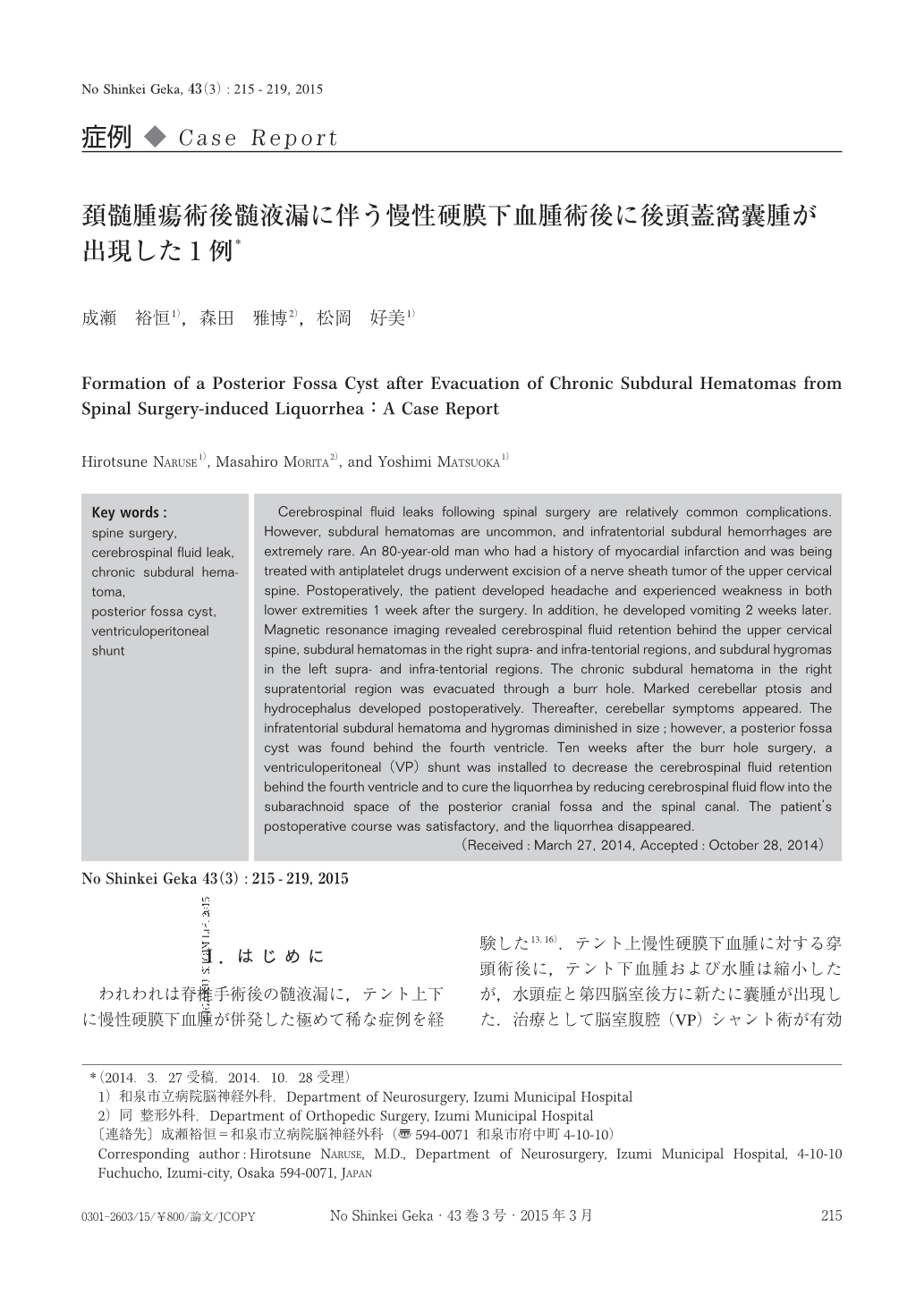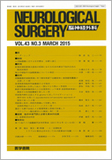Japanese
English
- 有料閲覧
- Abstract 文献概要
- 1ページ目 Look Inside
- 参考文献 Reference
Ⅰ.はじめに
われわれは脊椎手術後の髄液漏に,テント上下に慢性硬膜下血腫が併発した極めて稀な症例を経験した13,16).テント上慢性硬膜下血腫に対する穿頭術後に,テント下血腫および水腫は縮小したが,水頭症と第四脳室後方に新たに囊腫が出現した.治療として脳室腹腔(VP)シャント術が有効であったので報告する.
Cerebrospinal fluid leaks following spinal surgery are relatively common complications. However, subdural hematomas are uncommon, and infratentorial subdural hemorrhages are extremely rare. An 80-year-old man who had a history of myocardial infarction and was being treated with antiplatelet drugs underwent excision of a nerve sheath tumor of the upper cervical spine. Postoperatively, the patient developed headache and experienced weakness in both lower extremities 1 week after the surgery. In addition, he developed vomiting 2 weeks later. Magnetic resonance imaging revealed cerebrospinal fluid retention behind the upper cervical spine, subdural hematomas in the right supra- and infra-tentorial regions, and subdural hygromas in the left supra- and infra-tentorial regions. The chronic subdural hematoma in the right supratentorial region was evacuated through a burr hole. Marked cerebellar ptosis and hydrocephalus developed postoperatively. Thereafter, cerebellar symptoms appeared. The infratentorial subdural hematoma and hygromas diminished in size;however, a posterior fossa cyst was found behind the fourth ventricle. Ten weeks after the burr hole surgery, a ventriculoperitoneal(VP)shunt was installed to decrease the cerebrospinal fluid retention behind the fourth ventricle and to cure the liquorrhea by reducing cerebrospinal fluid flow into the subarachnoid space of the posterior cranial fossa and the spinal canal. The patient's postoperative course was satisfactory, and the liquorrhea disappeared.

Copyright © 2015, Igaku-Shoin Ltd. All rights reserved.


